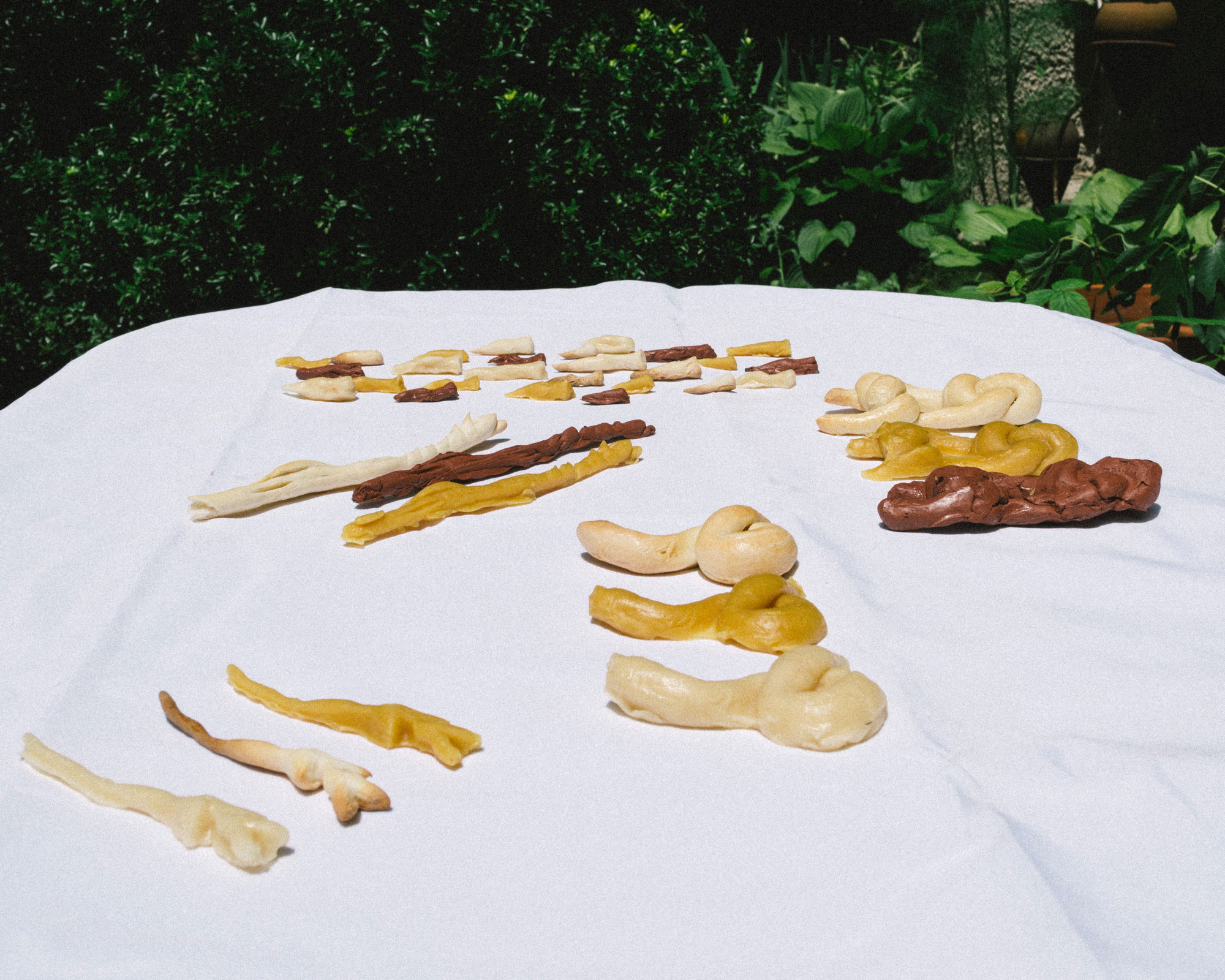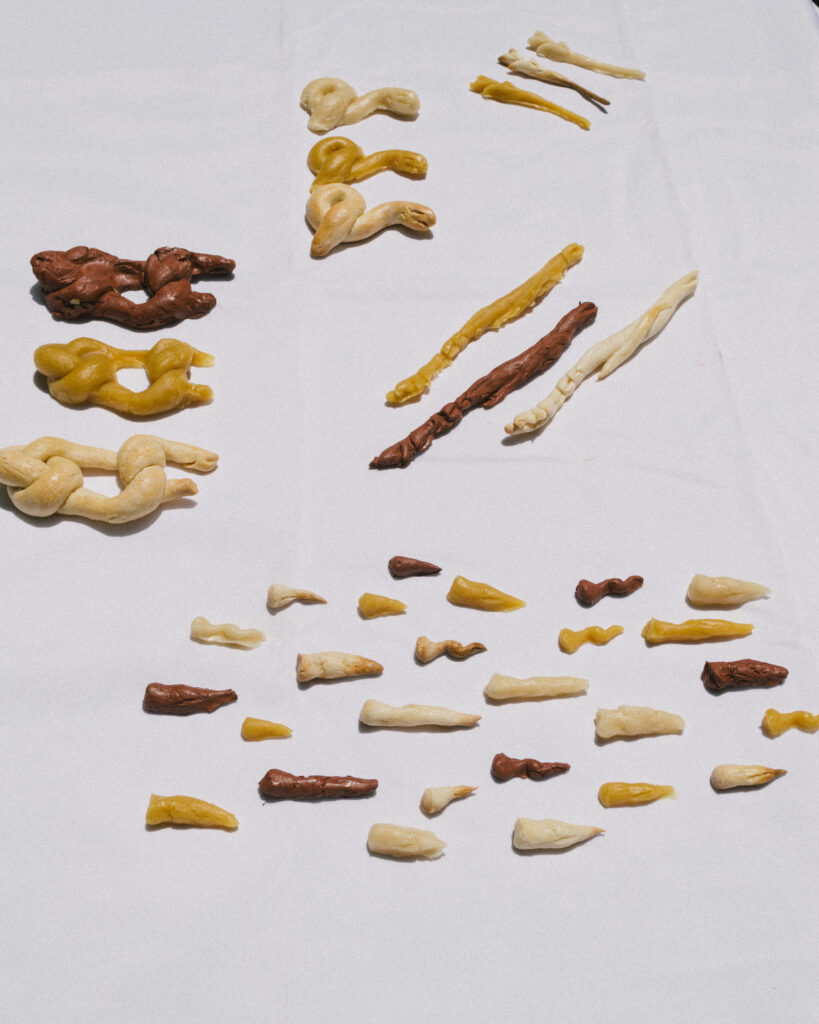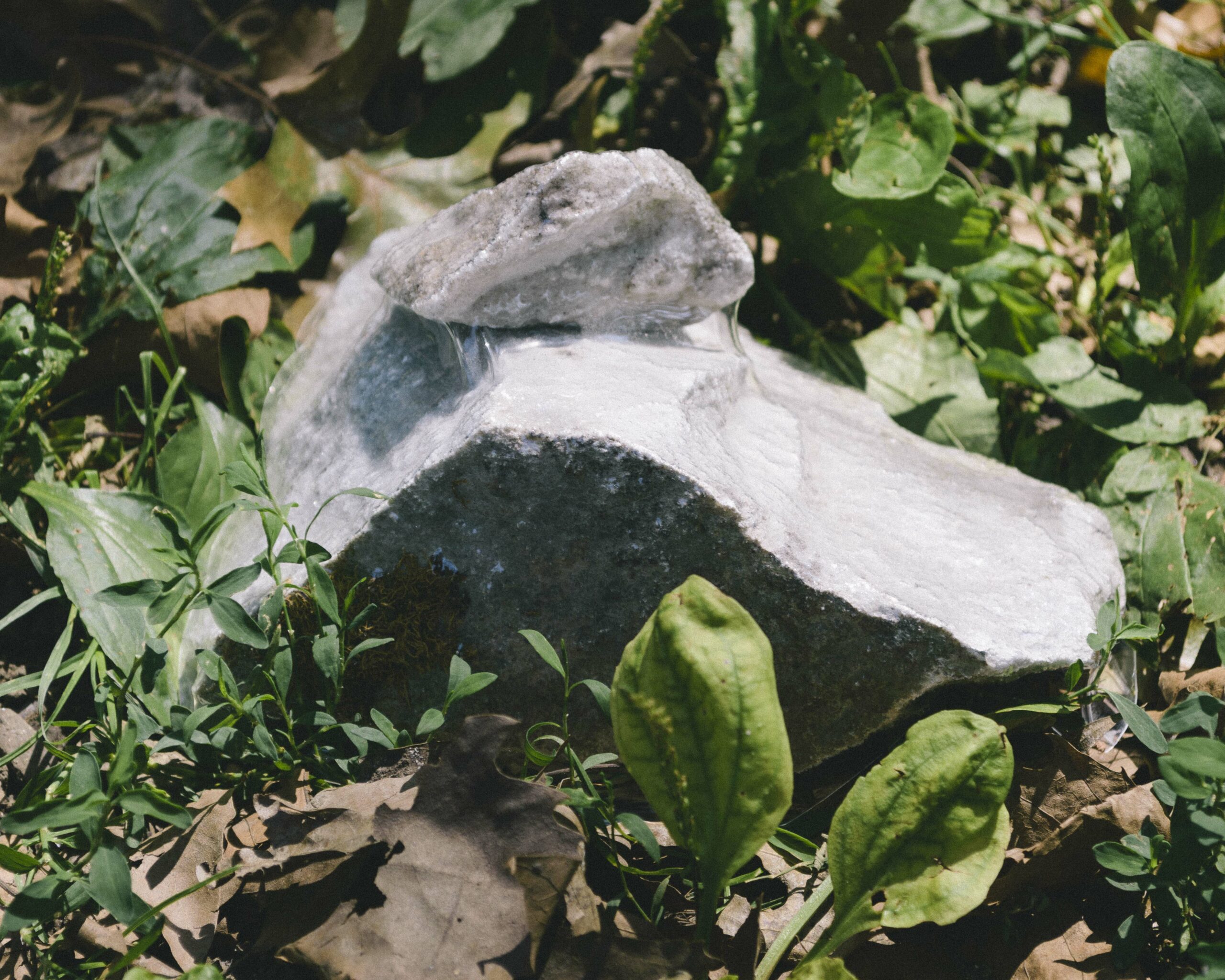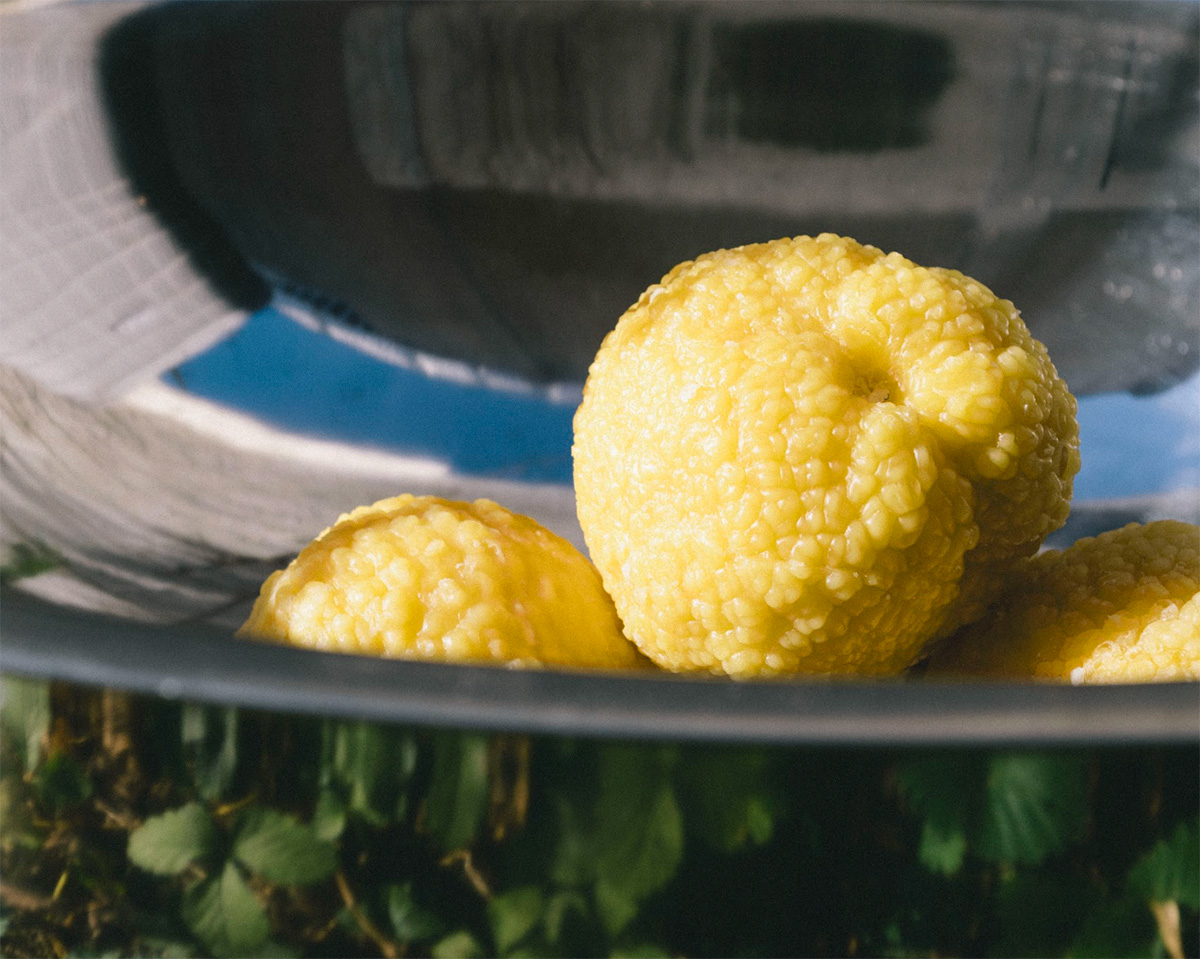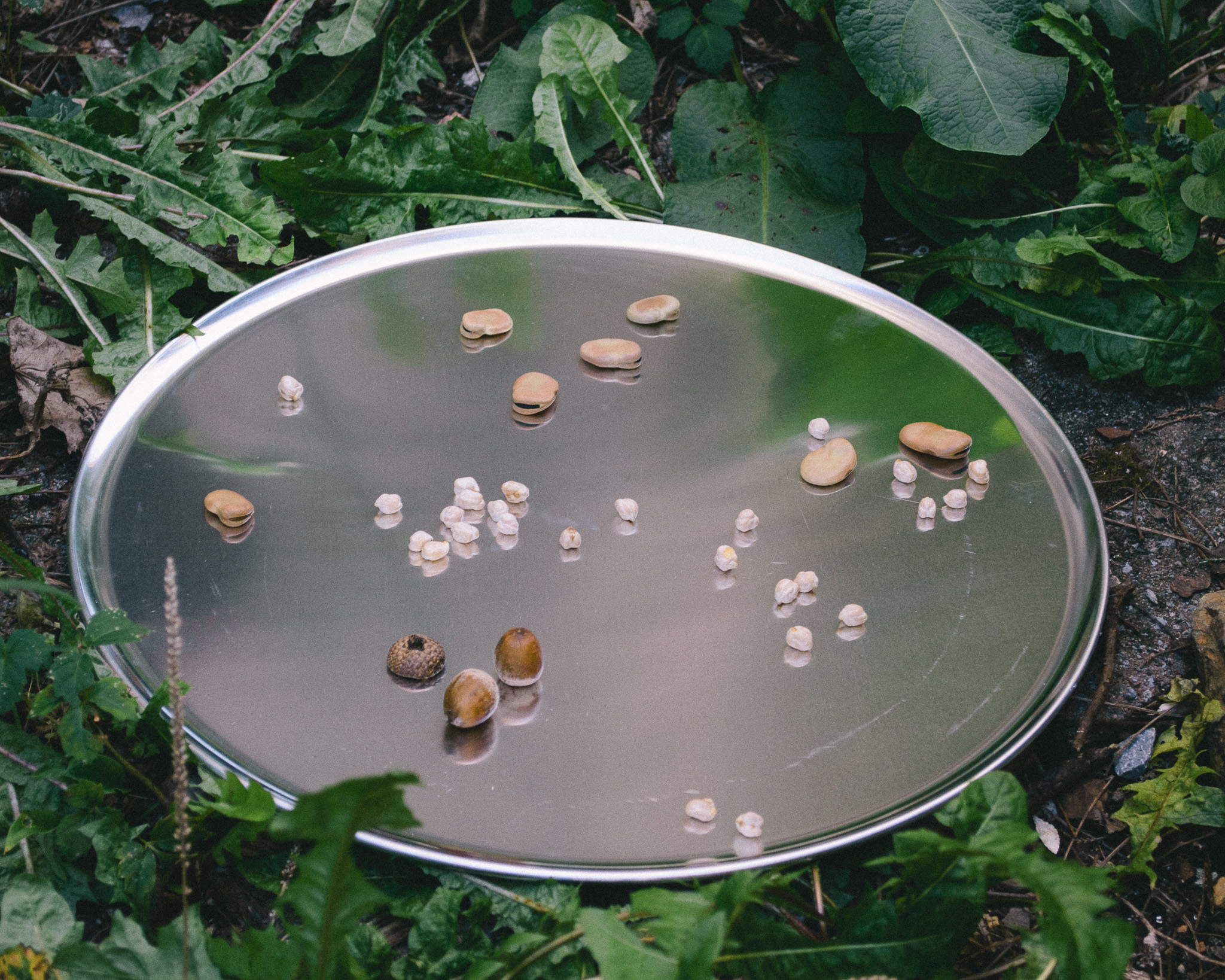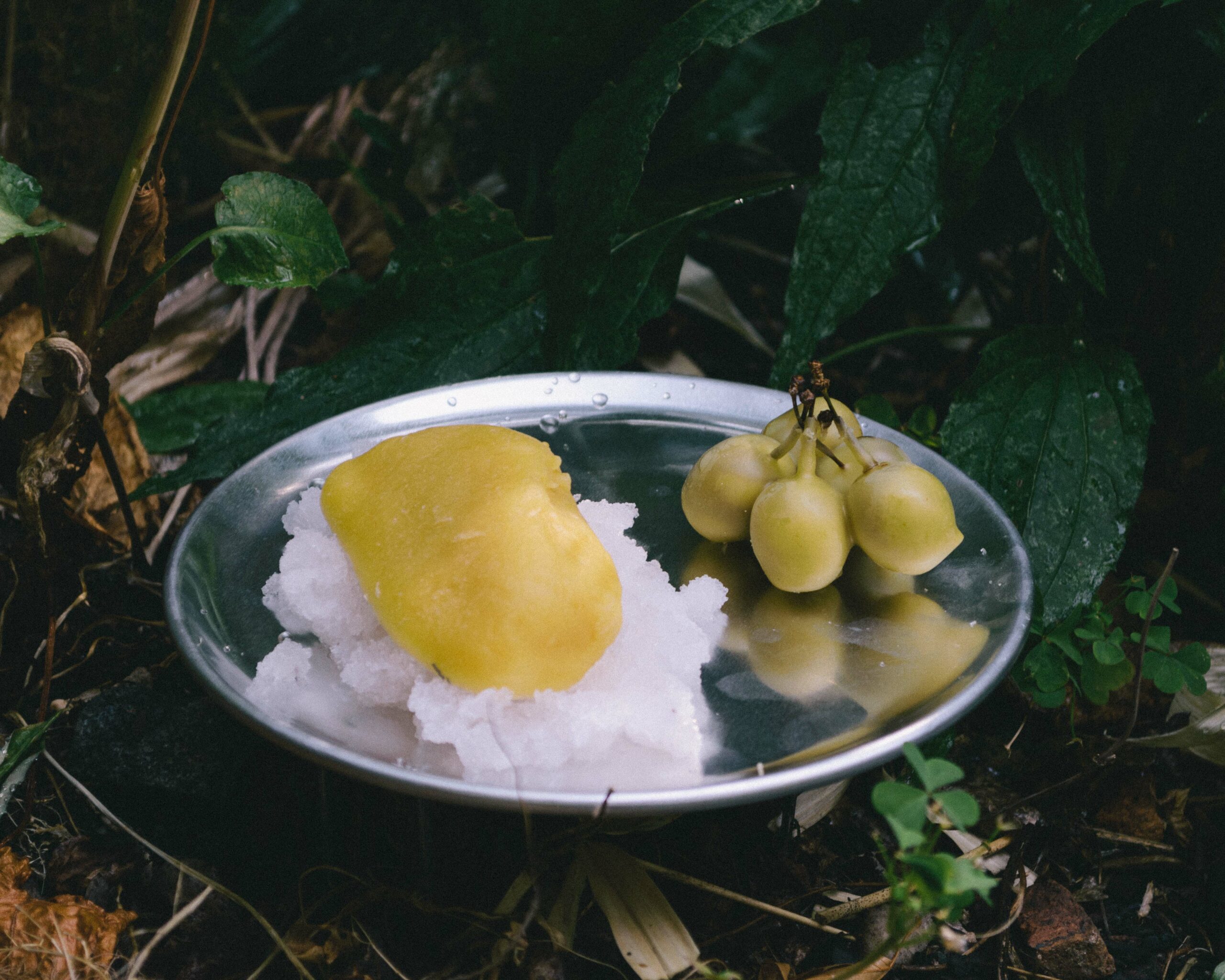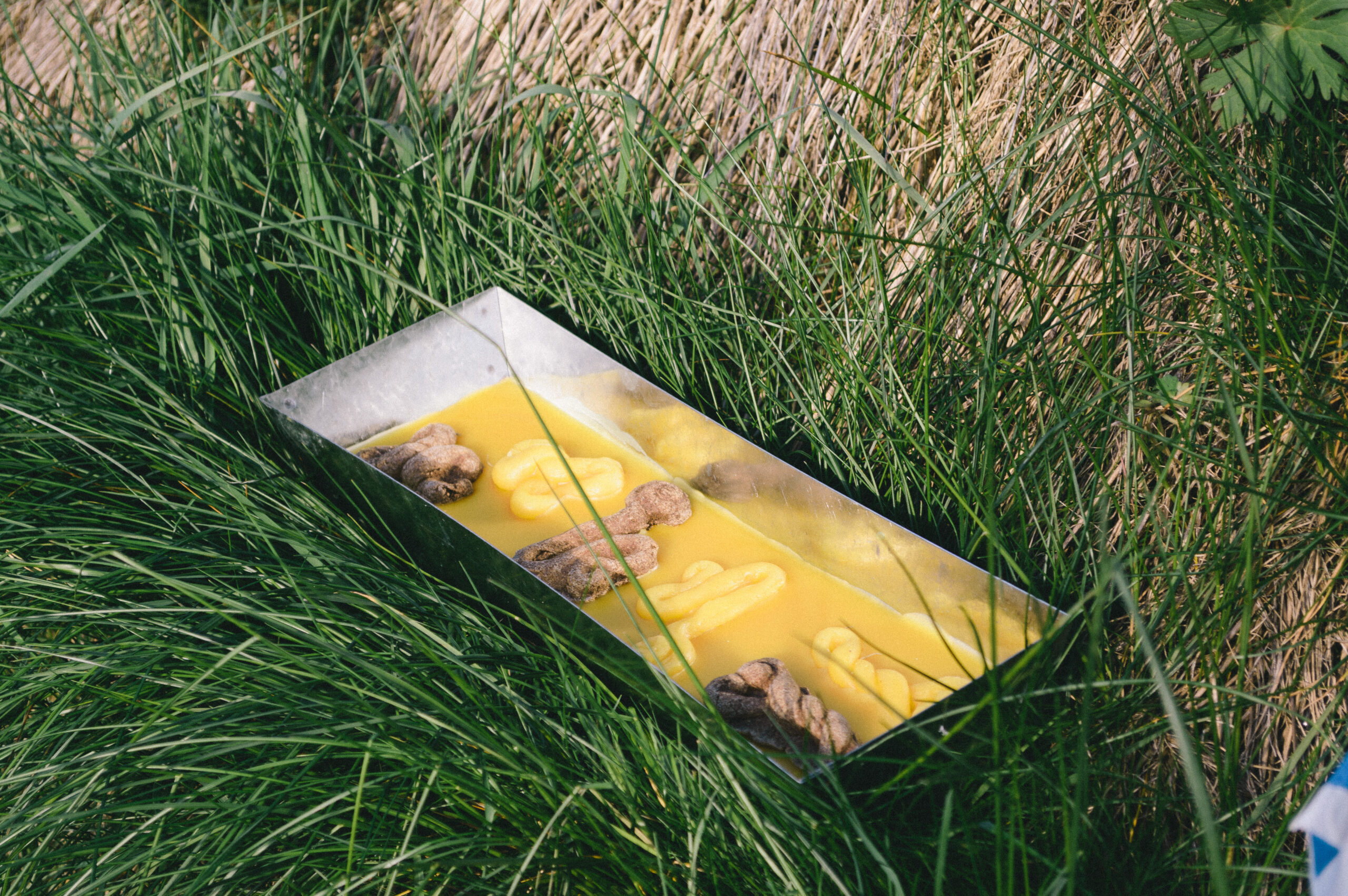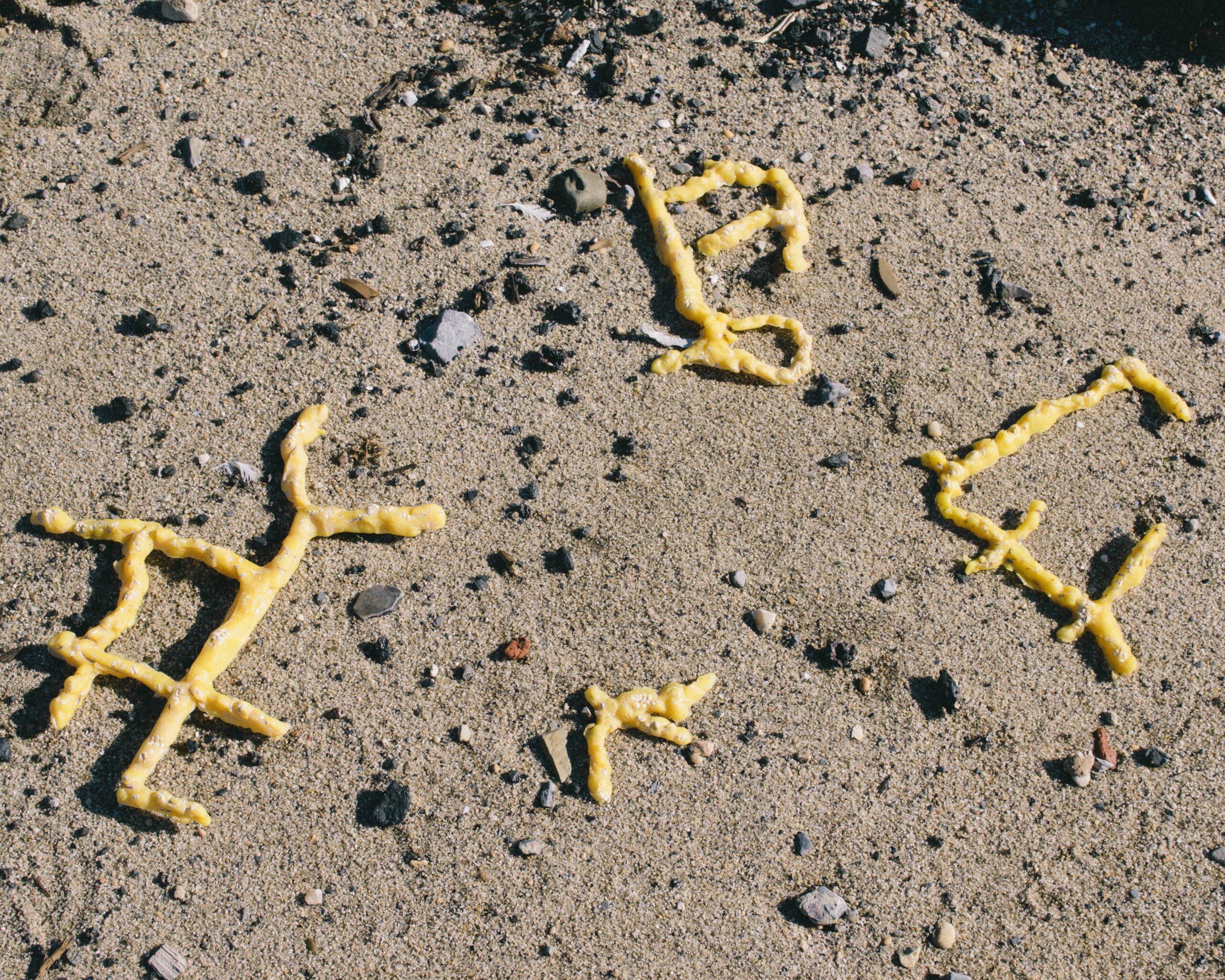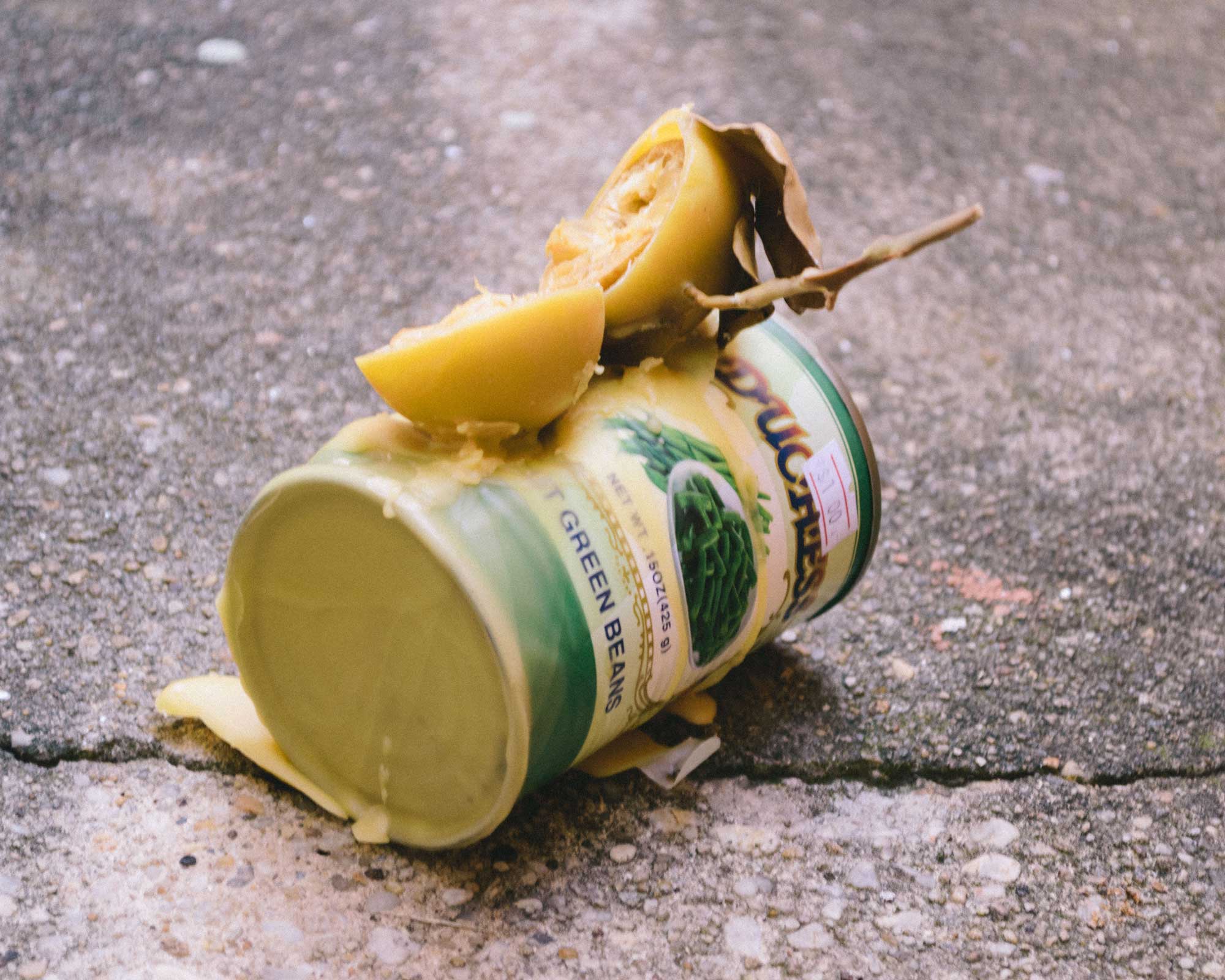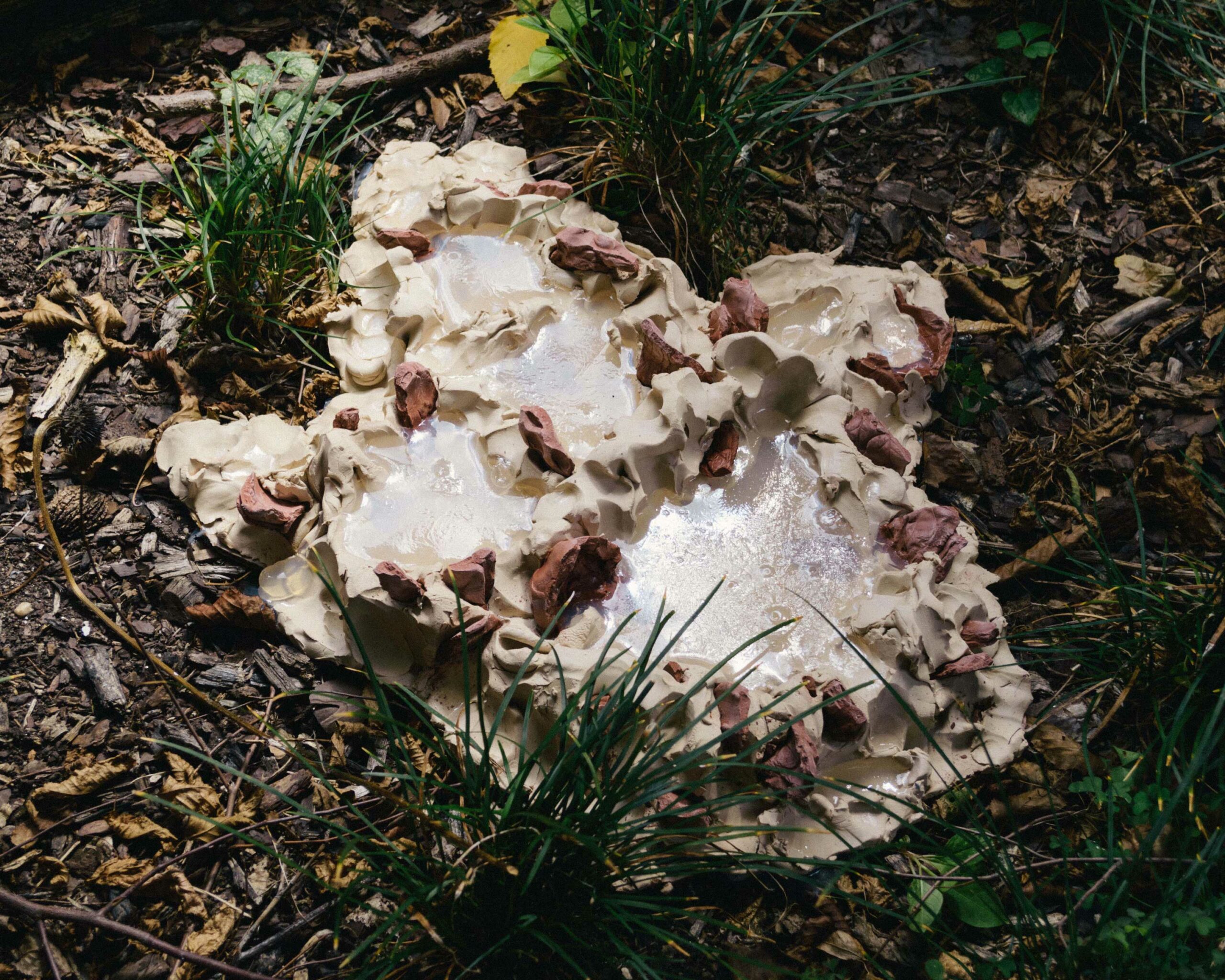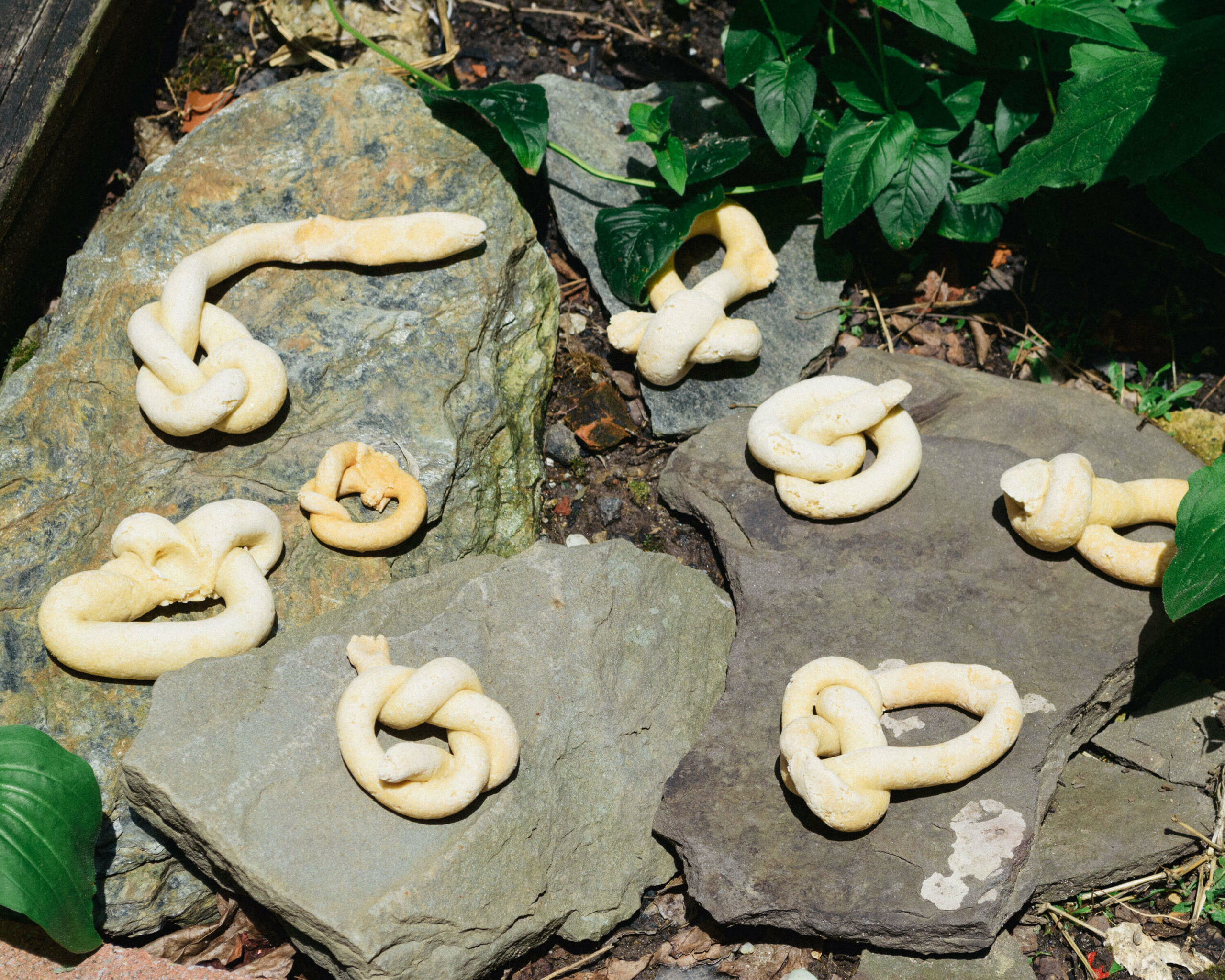Convivial Cosmogonies is a series that examines culinary labor practices and their material origins.
Myths, broadly speaking, represent a shared human impulse for order. Not order in the sense of establishing a linear history or parsing out concrete facts, but rather an order that simplifies and essentializes so that it may represent and re-present, as is required for myth proliferation. Mythological impulses and thinking are responsible for “higher” order religion as well as folk traditions. Myth is not pure or objective history, nor is it historical: it co-evolves with culture through perpetual reproduction, with each transformation or metabolization requiring adaptation or shedding of aspects which no longer perform the universal or essential qualities needed for myths to function. For these myth structures, food-stuffs, or the nominally edible, provide an intuitive narrative vessel that concentrates and distills the complex tangle of sensual, material, and cultural aspects that constitute myth and its associated rituals. Even more essential to these rituals (rituals being the gestural output and expression of myth) across cultures are votive foods; food or food-like offerings for an ancestor or a deity that transcend spiritual boundaries.
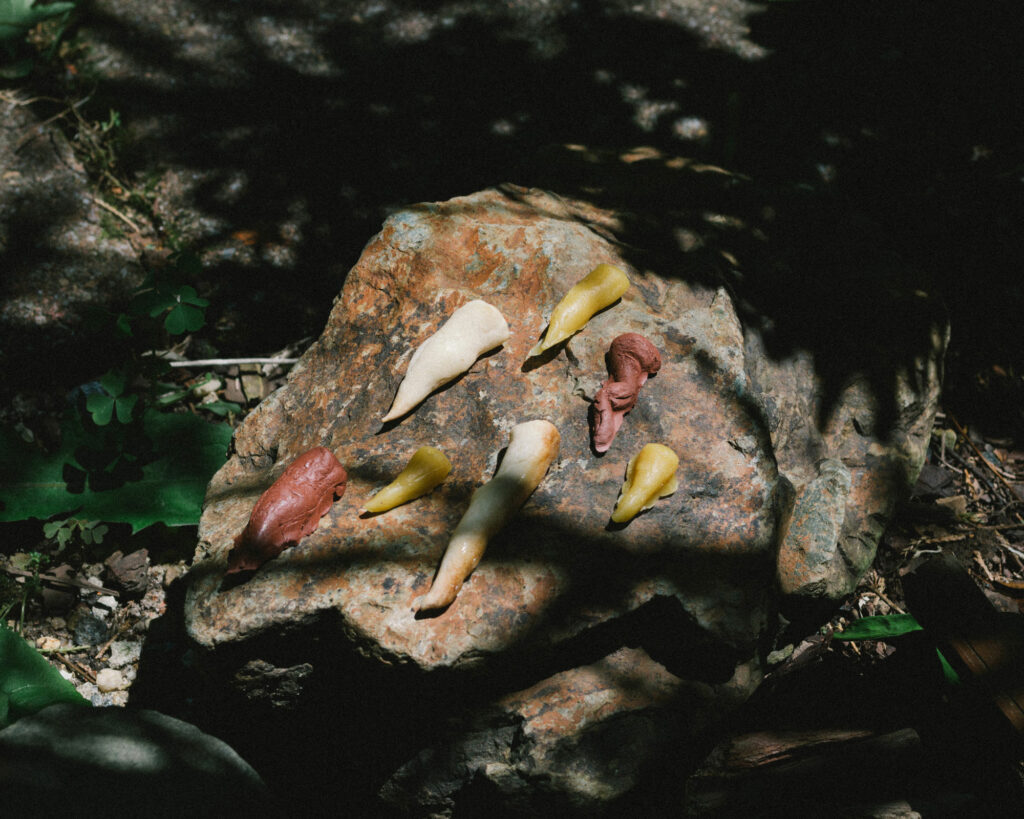
The power of a myth resides in its ability to seem as if it has always existed. Barthes identifies the transformation of history into nature as “the very principle of myth”1. In this way myths, magic, religion, ritual (including votive foods), spirituality, and so on become misunderstood as a kind of natural resource from which to extract and produce meaning, when in fact they are the products of a search for meaning. Mark Fisher observes “…the mythic is part of the virtual infrastructure which makes human life as such possible. It is not the case that first of all there are human beings, and the mythic arrives afterwards, as a kind of cultural carapace added to a biological core. Humans are from the start — or from before the start, before the birth of the individual — enmeshed in mythic structures.”2
- 1. Mythologies, Roland Barthes.
- 2. The Weird and the Eerie, Mark Fisher.
While myths are generated to “put a stop to the emerging chaos, and to resolve it into an order”, magic, according to Italian anthropologist Ernest de Martino, “becomes a tool to restore horizons that have entered a crisis”3. In this sense, ritual, magic, and associated myths are tools of establishing and reaffirming a reality, a way to address psychological crises at a communal level. De Martino does clarify, however, that Magic and Myth are fundamentally cultural and do not operate in isolation at the level of the individual, and in fact, in that isolation we lose the ability to discern between myth as a cultural phenomenon and myth as an imperfect technique to resolve individual crises. Considering myth, magic, and ritual spatially and materially is useful in understanding their function, which is very much “real” even if the content is a distortion or re-presentation of an alternate or aspirational reality. Or, per Barthes, “[t]he relation which unites the concept of the myth to its meaning is essentially a relation of deformation…The concept, literally, deforms, but does not abolish the meaning…it alienates it. 4” This alienation is only bad or dangerous insomuch as it places myths, rituals, and the sensuous more broadly outside of our conscious control and allows them to dictate our behavior and behave ahistorically when in fact they are the product of a longstanding communal exchange and agreement to maintain them as a technique for transforming nature into culture. In direct opposition to this potential alienation, Marx and Engels encourage us to “conceive the sensuous world as the total living sensuous activity of the individuals composing it.”5
- 3. II Mondo Magico, Ernesto de Martino.
- 4. Mythologies, Roland Barthes.
- 5. The German Ideology, Karl Marx and Friedrich Engels.
Participation in communal, ritualized eating or sharing of food, particularly with a god or an ancestor, represents a participation in a broader communal hunger across spiritual realms.
Food, like myth, is based upon a duality of the real and artificial, the natural and the constructed. It is the end point for a series of relations and processes, and yet, when it arrives at the store or the kitchen, it is still considered “raw” in some respect. Its arrival is assumed, which in reality only serves to further alienate us from its production and actual origins. It seems obvious if not fated that mythic thought employs food in its ritual expression, using it as a medium through which myths can quite literally be metabolized. Levi Strauss uses this metabolization (and cooking more specifically) as a metaphor through which to chart and graph mythmaking systems and their origins: “not only does cooking mark the transition from nature to culture, but through it and by means of it, the human state can be defined with all its attributes, even those that, like mortality, might seem to be the most unquestionably natural.”6
- 6. The Raw and the Cooked, Levi Strauss.
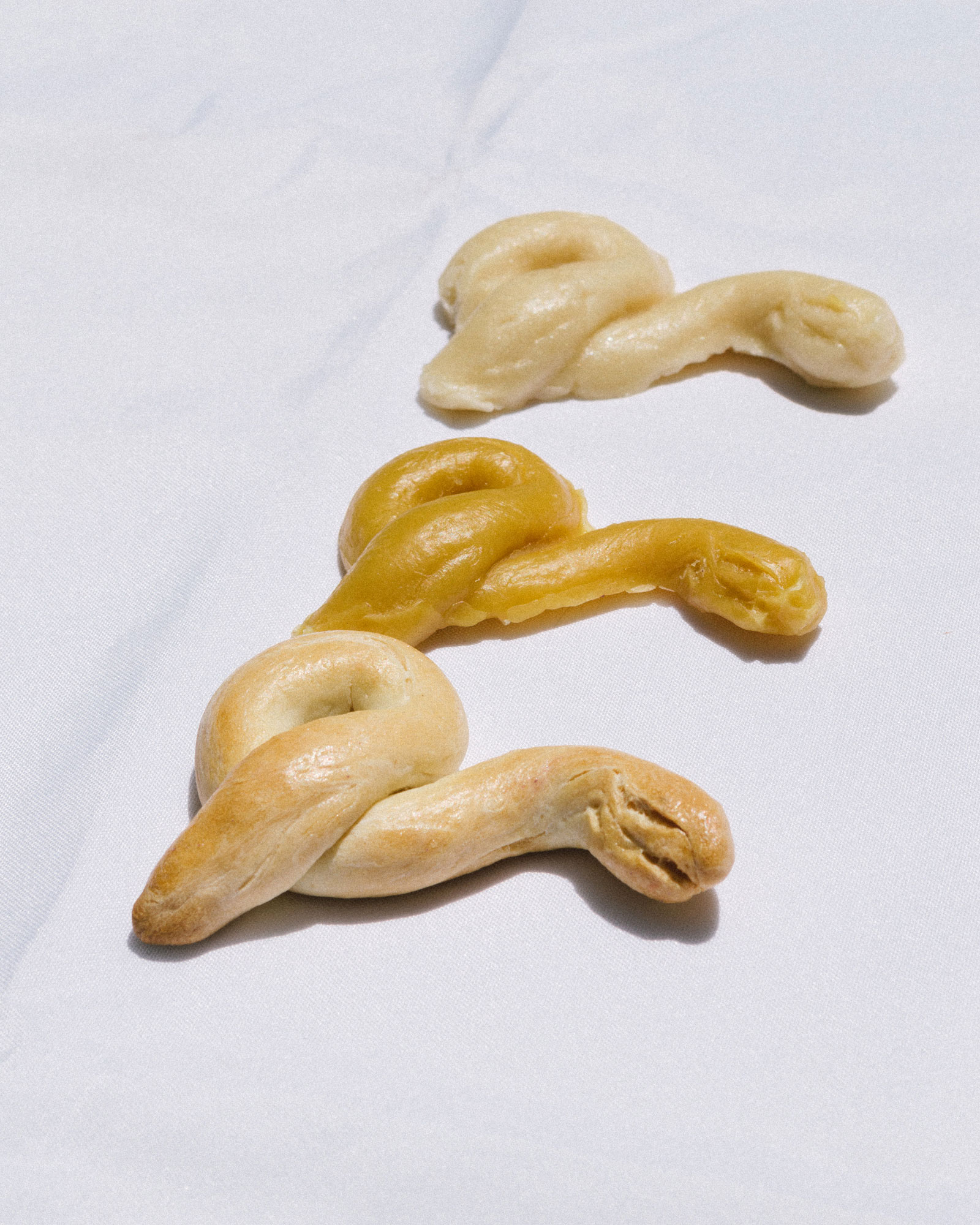
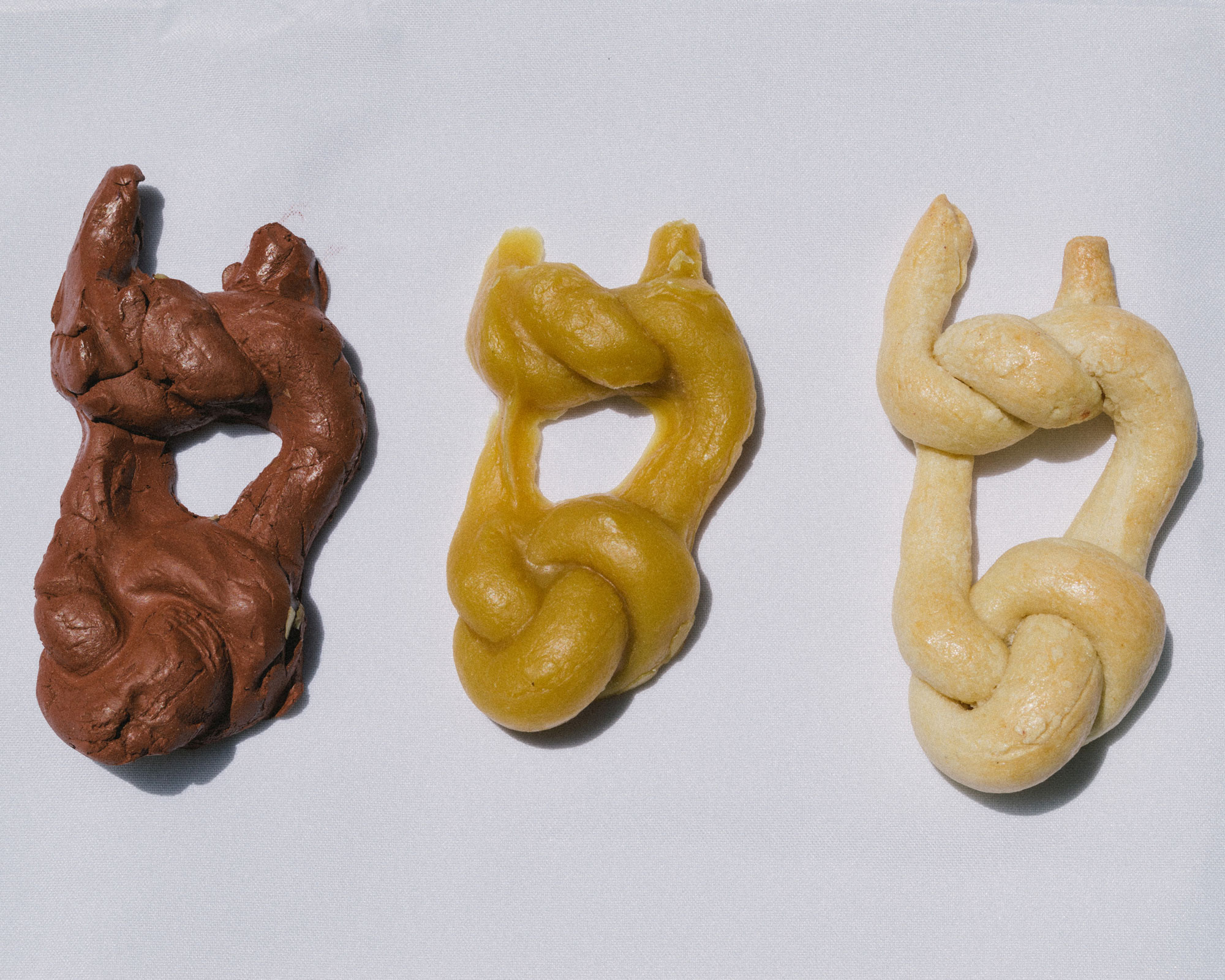
Offerings, feasts, or symbolic reproductions of food all fall under the canopy of votive or ritual foods with varying degrees of “edibility”. Ritual food and eating is fundamentally based on exchange and metabolization, both physical and social. Or, to put it more simply, companionship: the latin root com- meaning together or with, and the latin panis- meaning bread. There is a figurative digestion of the other in an act of communion or companionship, with devotion most deeply expressed through this metabolization and consumption. “It is a genuine trope to substitute the body for the spirit—and, at a commemorative dinner for a friend,to enjoy, with bold, supersensual imagination, his flesh in every bite, and his blood in every gulp” (Novalis). Participation in communal, ritualized eating or sharing of food, particularly with a god or an ancestor, represents a participation in a broader communal hunger across spiritual realms.
Here, food serves as a shorthand for or compressed expression of the surrounding ecology and landscape from which myths and rituals are formed. Votive foods, therefore, function as containers for myth, embodying narrative and magic at an almost cellular level: embedded in the material itself and further expressed through its form. This embodying or containing is something Ursula Le Guin speaks on in relation to the Carrier Bag Theory of Evolution.
“If it is a human thing to do to put something you want, because it’s useful, edible, or beautiful, into a bag, or a basket, or a bit of rolled bark or leaf, or a net woven of your own hair, or what have you, and then take it home with you, home being another, larger kind of pouch or bag, a container for people, and then later on you take it out and eat it or share it or store it up for winter in a solider container or put it in the medicine bundle or the shrine or the museum, the holy place, the area that contains what is sacred, and then next day you probably do much the same again-if to do that is human, if that’s what it takes, then I am a human being after all. Fully, freely, gladly, for the first time.”
The Carrier Bag Theory of Fiction, Ursula Le Guin
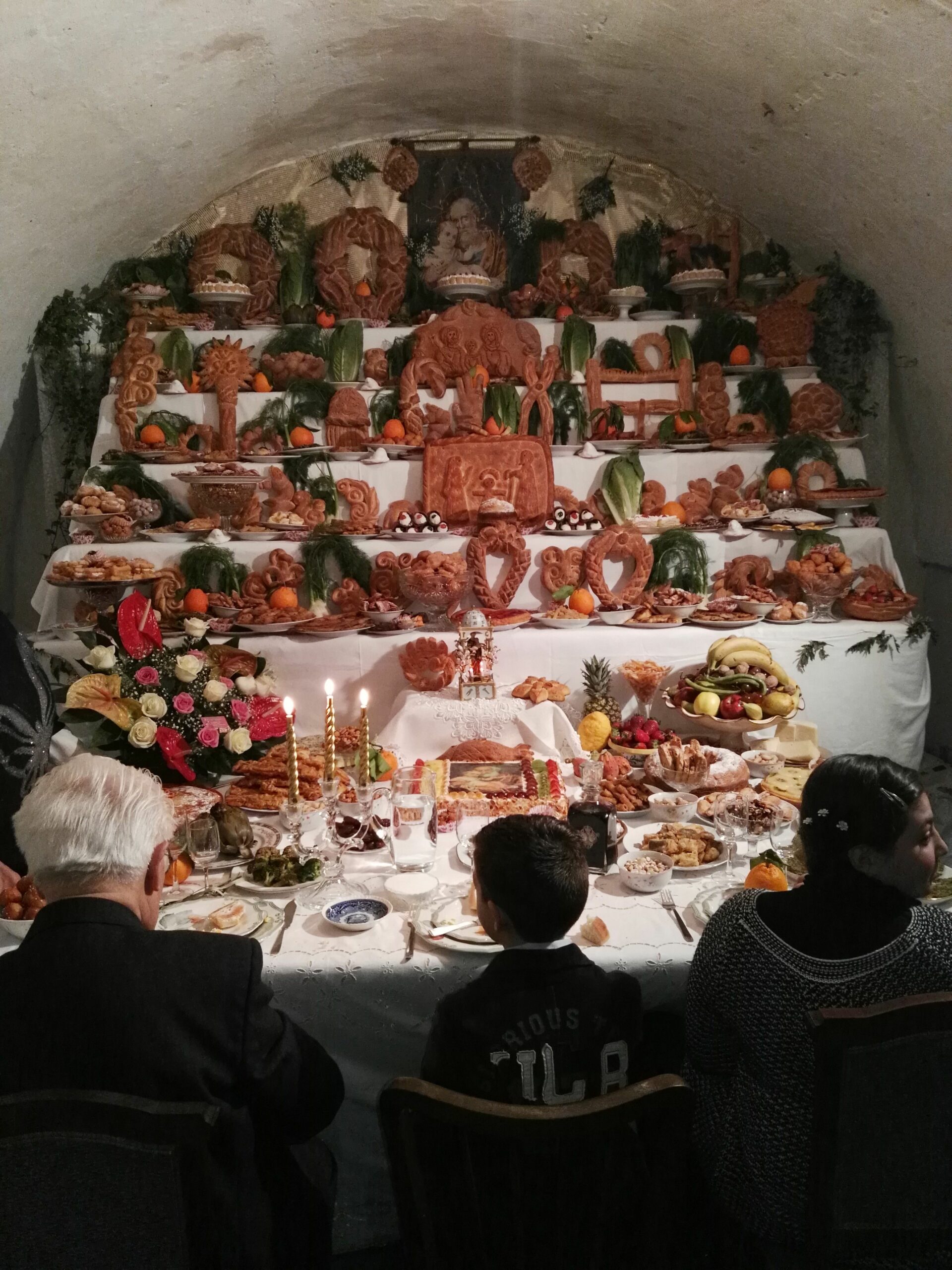
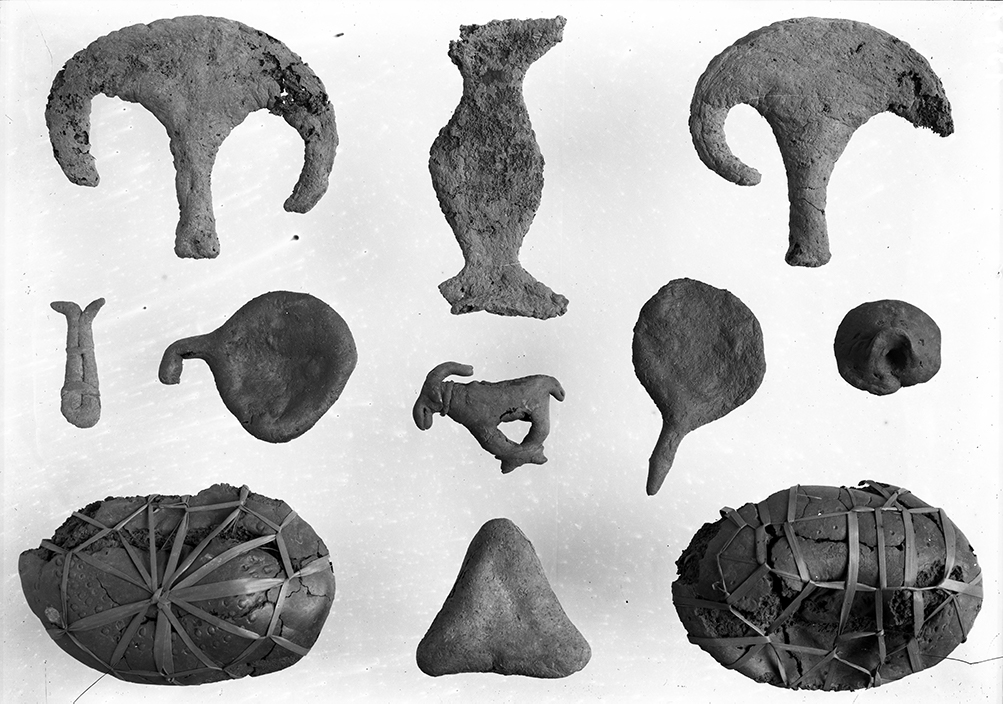
Funerary food, a tradition that spans geography and culture, is an ancient example of votive food. Ancient Egyptian tombs were found to contain breads, preserved meats, wine, and grains for the afterlife, as well as to-scale models of bakeries, breweries, and fields replete with tiny workers, miniature cattle, and to-scale vessels of wheat or dough. These resemble corresponding Egyptian “soul houses,” which were miniature homes for the dead to dwell in in the afterlife. The Etruscans and Romans (who borrowed extensively from the Etruscan religion) would also bury their dead with clay sculpted food and cutlery along with various agricultural tools and cooking vessels that might be of use in their next life. Etruscan burials also included actual food offerings and animal sacrifices to a similar end. Laid out neatly, as one would set a table, these miniature foods bear resemblance to tchotchkes displayed in a home with their simplified and generalized representation of organic forms. The grapes seem to be a composite of all of the grapes that have ever existed and there is the sense that they may very well represent an infinite bunch of grapes. The Egyptian miniature production sites achieve something similar: rather than provide the food itself, the deceased is gifted perpetual production of the stuff of life in a portable size. Umberto Eco describes a similar mythic quality when describing Las Vegas as a “message city”7, a city so artificial and constructed that its very purpose is to communicate. The myth and magic embedded in and represented by these miniature objects and their context requires a simultaneous belief in their real and symbolic (i.e. communicative) use. Mexican ofrendas are another expression of this ritual action (and of mixed indigenous and Christian material rituals), with food and other sensory elements playing a central role in altars or ofrendas devoted to deceased ancestors. Sweet breads, salt, jugs of water, incense, marigolds, and sugar skulls (the favorite food of the deceased), act as offerings and points of connection for the ancestor who journeys from their realm back to ours.
- 7. Travels in Hyperreality, Umberto Eco.
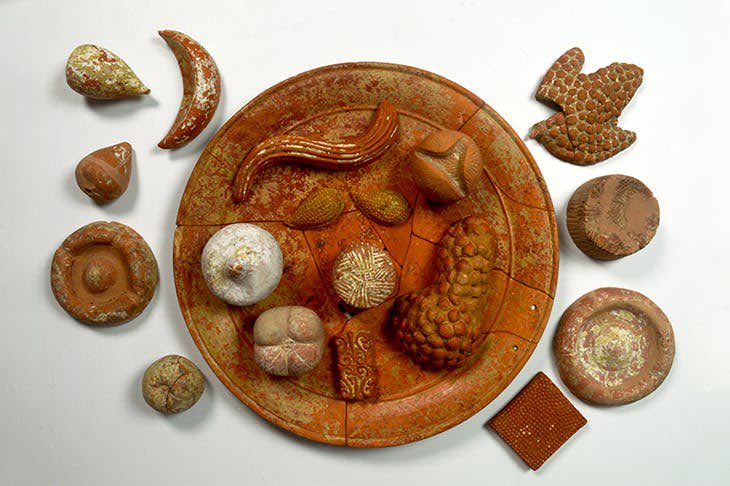
Religion often incorporates folk ritualization, relying on familiar folk traditions to render the religion more palatable to a population. While religion is defined by a top-down distribution of ritual actions and systems, folk rituals arise from the specific material and cultural histories of a given population. In many cases, religion will absorb folk traditions of a group in order to dominate it; obvious examples being the colonization of South and Central America, where indigenous populations were encouraged to conflate existing objects of worship with a corresponding Catholic saint, or in the Mediterranean, where long-standing indigenous pre-Christian agricultural festivals were appropriated to celebrate key Christian figures, though Christianity officially denounces idol worship.
Votive foods can also be used as an alternative to true sacrifice when employed in service of a deity. The edible is used to reproduce the action of sacrifice, whether it is the offering of animal, agricultural products, or cooked food from one’s own larder, or in representation of a devotional act like the sacrifice of an animal life. In Italian traditions that originate from agricultural calendar-based festivals, breads are formed in the shapes of various flora and fauna from the region and arranged in altars. Roman Consul Macedonius (ca. 500–560) describes a doughy representation in a plea to the goddess Demeter: “The two oxen are mine and they helped to grow the wheat. Be kind, Demeter, and receive them, though they be of dough and not from the herd. Grant that my real oxen may live, and fill my fields with sheaves . . . for the years of thy husbandman . . . are already fourscore and four. He never reaped rich Corinthian harvests, but never tasted bitter poverty.”8 Later iterations of these altars include Christian symbols like crosses or even Christ himself alongside bundles of wheat, cows, and various native plants all reproduced in bread. The Eucharist is in some ways the officially sanctioned version of this, with the idea of transubstantiation transforming the wafer (symbolizing the bread shared at the last supper) and the wine into actual flesh and blood to be consumed in an act of devotion and recognition of Christ’s sacrifice.
- 8. epigram 6.40, Macedonius.
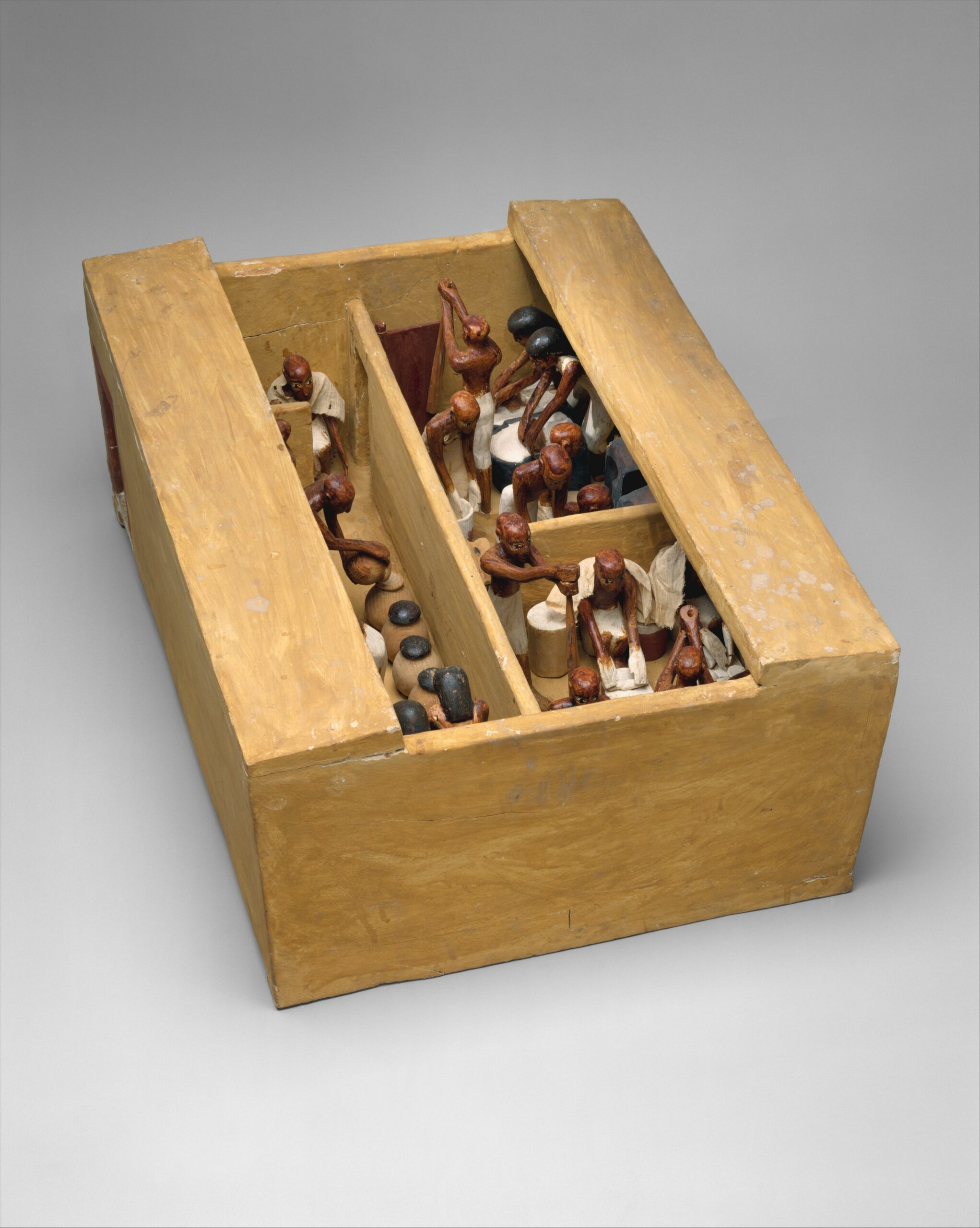
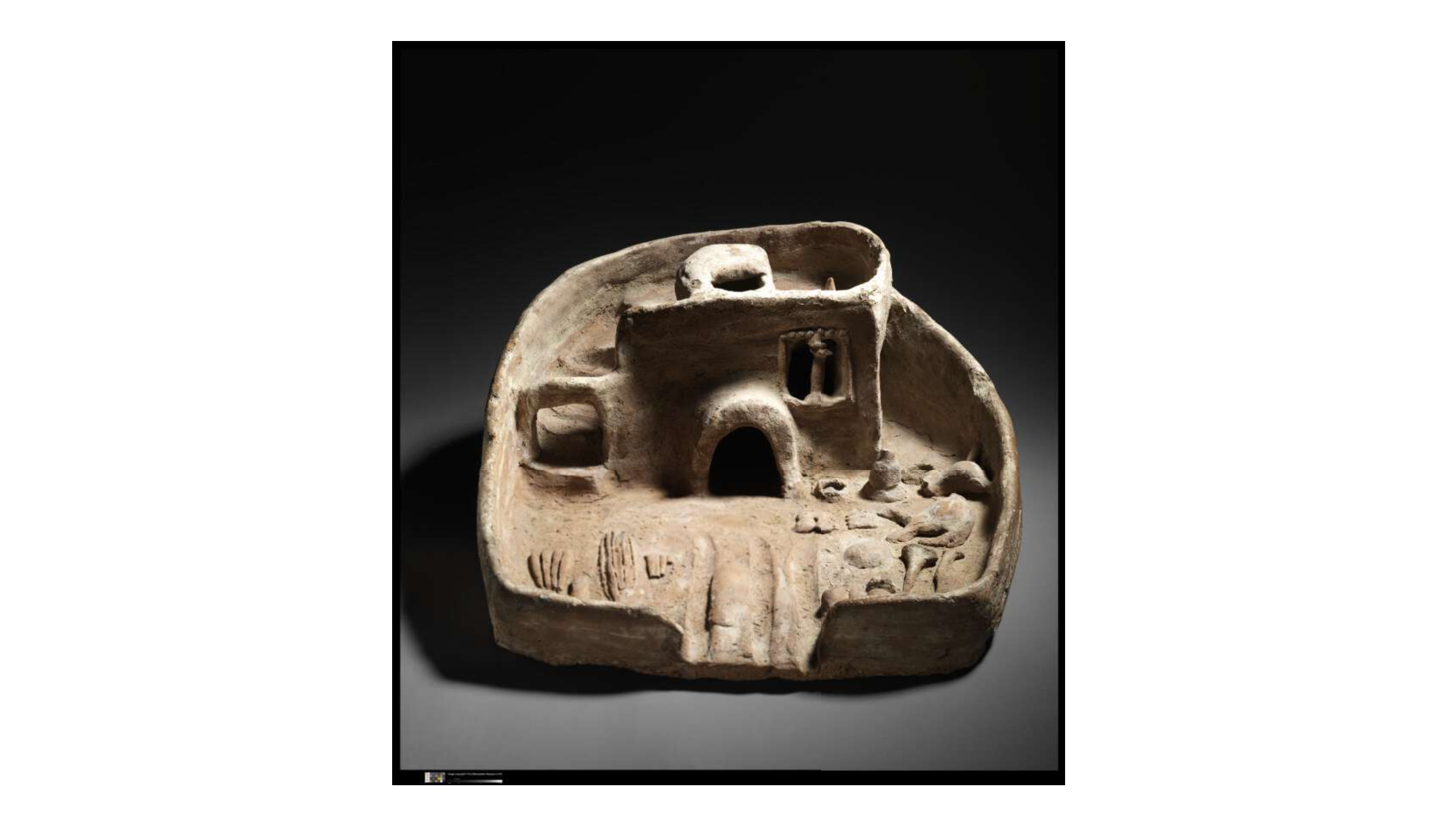
While representational (or re-presentational) foods are especially communicative and heavy in a religious votive action, commercial foods and their presentation are similarly symbolically laden. Foods like gummy bears, goldfish crackers, a dark n’ stormy cocktail, ice cream cakes, ice sculptures, candy corn, gingerbread houses, fruit flower arrangements, or butter sculptures. One bridge between ancient, historical, and religious devotional foods and their commercial descendents are the opulent feasts of the elite beginning in one form or another in the ancient world. Illusions, reproductions, and miniatures were created not in service of a ritual practice to ensure a bountiful harvest, but rather to perpetuate the mythology of the elite as deities themselves.
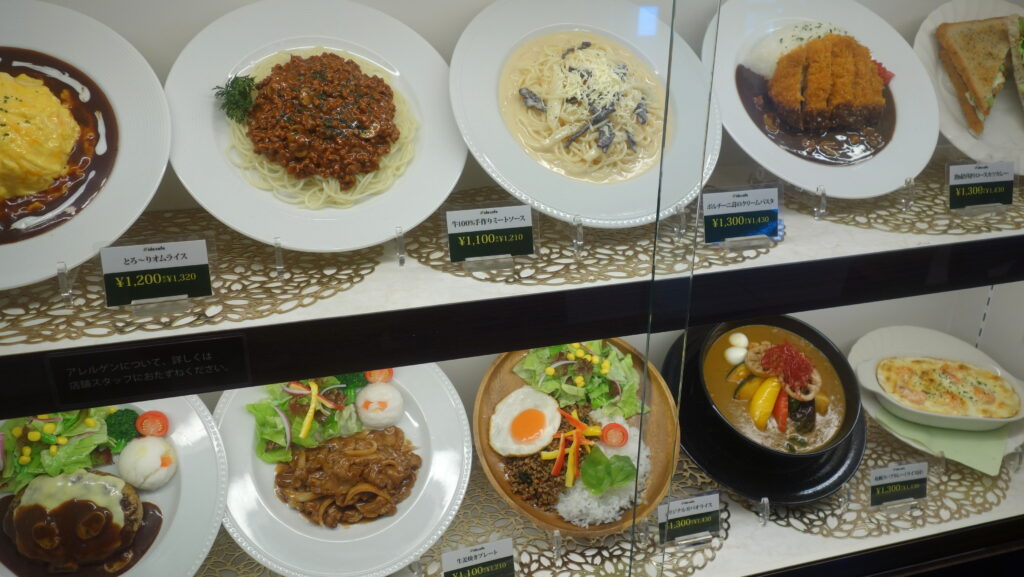
Current expressions of this lineage of illusion include “Fake” foods like Japanese sampuru, which are the plastic or resin foods that are displayed in restaurant windows in order to provide a pictorial menu. These reproductions obviously do not simulate the sensuous qualities of the food, but rather function as a kind of autonomic trigger, enabling the potential customer to call upon their experience with similar forms at other restaurants to envision a possible experience at this one. Arranged in the restaurant window they constitute a different sort of altar, with the object of fixation or ritual being one of commerce and consumption. One step further is Disney World’s now defunct Toon Town, specifically Minnie Mouse’s house, with its inflated door handle, grotesquely bulbous appliances, and secret voyeuristic peepholes. The house is one continuous undulating plastic surface that makes the whole place feel dipped in resin or shellac, like a sofa with a plastic cover. A hologram of cookies was displayed in the kitchen with a winking note from Minnie that said “Please try my special “diet” cookies! Humorously Yours, Minnie” printed in “her” handwriting on a hard piece of plastic shaped like a sheet of paper from a notepad. The fridge was also plastered with little notes and photos. Inside the fridge were all kinds of opaque jars of condiments and wheels of cheese for Miss Mouse, while nearby were button-activated, looping performances of a cake rising in the oven and popcorn popping, all visible through windows in the appliances.With each family that toured her house, accessories with their plastic mouse ears, the myth of Minnie was further perpetuated. The difference between these re-productions and the altars of bread or clay funerary foods is fundamentally the myths they are reproducing and proliferating and the resulting ritual action. They also call into question the origins of those myths and the need they serve. A common human need to recognize an ancestor is fundamentally different from the need of a corporation to sell you a t-shirt or a meal. Communally generated myths necessarily include and respond to the material realities of a given community while those myths that are manufactured and handed down benefit from the alternative and frictionless reality that mythological thinking encourages. Understanding mythmaking as an action rather than myth as material for consumption allows for reproduction and invention of myths and associated ritual actions that better serve the communities and ecologies with which they are intertwined.
✺ Sicilian Votive Bread ✺
- 5 teaspoons (2 packages / 0.4 oz / 14 g) active dry yeast
- 1/2 cup (24 oz/ 120 g) warm water
- 2 tablespoon (1 oz 30 g) olive oil
- 2 teaspoon (.4 oz / 14 g) malt syrup, malt powder, or honey (optional)
- 2 cup (16 oz / 240 g) water, at room temperature
- 1000 g (or 7 cups) semola rimacinata (finely milled semolina or durum wheat flour)
- 4-6 teaspoons (0.6 oz to1 oz/ 20 to 30 g) salt
- 1 egg, beaten with a tablespoon of water
Dissolve the yeast in the 1/2 cup of warm water in a large mixing bowl; let stand a few minutes until foamy. If the yeast doesn’t wake up try adding a bit of honey or sugar (¼ teaspoon or so) to the water. Whisk in the 2 cups of water, oil, and malt syrup or honey if using. Mix the flour and salt before adding to the water and yeast mixture. Incorporate using your hands or a wooden spoon until smooth. Knead by hand for 8-10 minutes until the gluten strands form and the dough bounces back when poked. Transfer to a lightly oiled bowl and let rest covered for an hour or two depending on the ambient temperature until risen and puffy.
Once the dough is fully risen, portion it into pieces (always keep these covered with plastic or a damp towel) and begin shaping. Have a baking sheet or two lined with parchment paper ready. Experiment with a range of sizes and forms. Try rolling out sheets and cutting shapes, braiding long strands, or cutting into ropes with scissors for a spiny effect. Larger forms or layered forms will take longer to cook and may split but this can achieve its own effect. Once your forms are made and laid out on the baking sheet cover and let rise a second time, an hour to two hours depending on the ambient temperature.
Preheat your oven to 425 degrees fahrenheit. Once the shapes have risen the second time, brush with your egg wash of egg and water and bake until a burnished brown. The timing will depend on the size of your shapes but it can take anywhere from 10–30 min. If these breads are for eating, they can be taken out a bit softer but if they are for votive use cook them a bit longer for more browning and to minimize the chance of mold. Let cool before serving or displaying.
